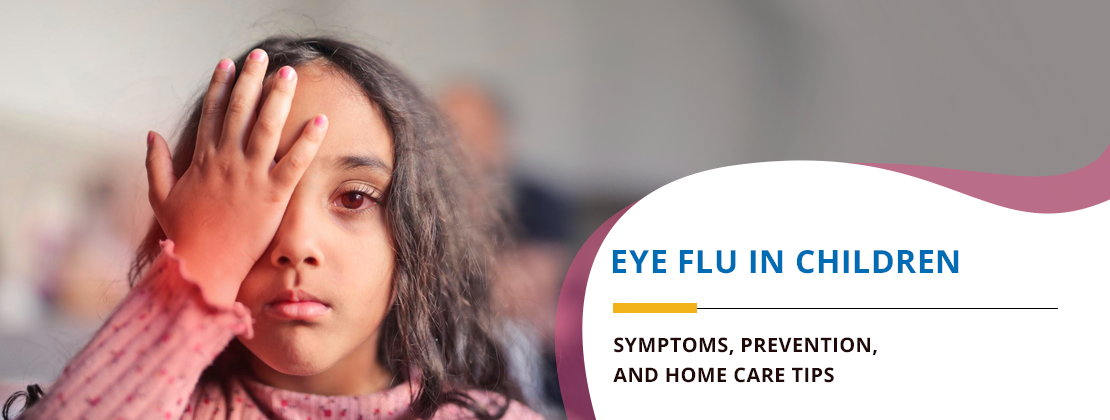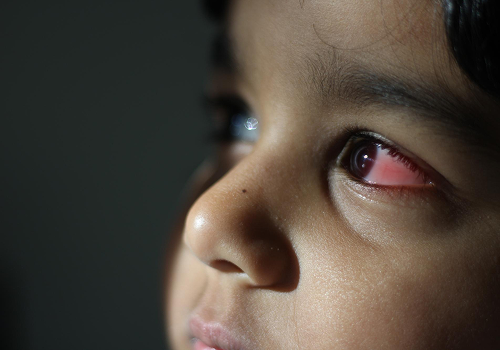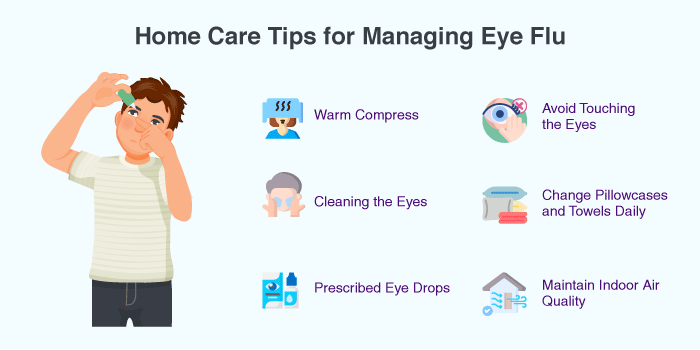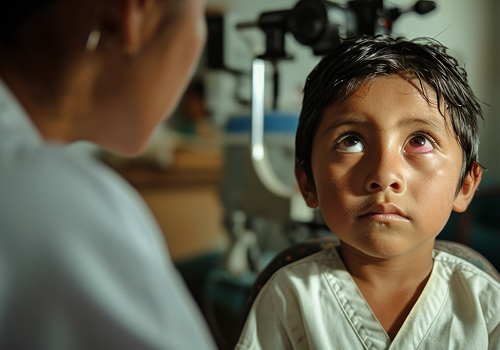
Home / Blog / Eye Flu in Children: Symptoms, Prevention, and Home Care Tips
June 11, 2025
When your kid wakes up with red, itchy, and teary eyes, he/she may have caught eye flu, pink eye, or conjunctivitis.
This can be frustrating for patients due to the contagious nature of this disease and the potential disruption it can cause, which includes discomfort and irritation, visual disturbances, missed school days, and more.
The Indian Journal of Ophthalmology published a research study that showed that conjunctivitis causes about 30% of children’s eye problems in India and eye-related consultations among children during peak seasons like the Indian monsoon. In fact, during school outbreaks, cases can double within a week due to their highly contagious nature.
In this article, let us learn about eye flu in children, how to detect it in time, and how to take care of a sick child without spreading the disease at home.

Eye flu is a disease that affects the conjunctivae. This part of the eye is very thin, and it covers the inner side of the eyelids and the white part of the eye. Conjunctivitis can be caused by viral and bacterial agents as well as allergens or irritants like smoke or dust.
The most usual kind of conjunctivitis in kids is viral conjunctivitis. This type of conjunctivitis is very contagious, and it tends to move rapidly among children in school or at play, especially during the months of monsoon and humidity in India.
The signs of conjunctivitis in children are easy to spot:
People with bacterial conjunctivitis may have sticky pus that is yellowish or greenish and may cause closure of the eyes. Viral infections are characterised by a clear discharge, while allergic conjunctivitis is associated with sneezing as well as a runny nose.
Although conjunctivitis is highly contagious, you can lower the chances of getting it by practising basic hygiene measures.

Don’t worry if your child gets conjunctivitis. Most times, you can treat its symptoms at home. Try this:
Put a towel in warm water, squeeze it and place it on the eyes of your child. It will reduce puffiness and soften mucus crusts.
Use a wet, soft cloth to clean the mucus. Start wiping from the inside towards the outside and change the part of the cloth used for wiping every time.
Ensure to use eye drops or ointment properly as advised by the doctor. Apply them gently, and remember to wash your hands before and after using them.
Tell your child not to touch or rub their eyes even when they are itchy.
To avoid infecting others, wash all fabrics using hot water.
Make sure your child does not come into contact with smoke, perfumes, or dust, as these may make the symptoms worse.

Eye flu in children usually gets better after a short time, but doctors should be seen when:
If this happens, take your child to a paediatrician or see an eye specialist. Parents may consider visiting HCG Hospitals, a well-known multispeciality hospital in India, to get specialised treatment for their kids.
Dealing with a child who has eye flu can be difficult, but your help is very important. Here are some useful suggestions:
Eye flu is a normal condition among kids that can easily be dealt with through proper attention. Parents must observe, stop transmission, and promote recovery using natural treatments. However, if the condition continues to worsen, they can take the child to HCG, the best ophthalmology hospital in India, for prompt care and support.
Viral conjunctivitis usually takes one week, but bacterial conjunctivitis may heal within five days if treated with antibiotics. Allergic conjunctivitis lasts until the allergen goes away.
Yes. People often get allergic conjunctivitis from pollen or dust mites in their homes. It usually affects both eyes and comes with sneezing and a blocked nose.
Temporary blurred vision may happen as a result of discharge or irritation. Timely treatment can prevent permanent visual problems in children.
In India, eye flu cases are highest during the rainy and hot seasons. This is because, during this time, viral infections are easily spread, and people may not be able to keep themselves clean.